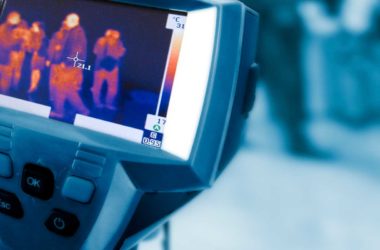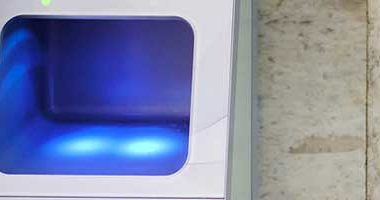Resources are dwindling and skill shortages are rife. Can AI and robots help humanity? In this five-part series we take a look at companies around the world that think they can.
From north to south, Americans are facing a number of key challenges as their population ages and grows. All the while, economic slowdown plagues many once-bustling hubs.
Can tech come to the rescue?

Here, we take a look at some of the American companies investing in new ways robots and AI can transform society to become a healthier and more productive place.
AI to speed up patent filing
Country: United States
Sector: Legal
Company: Legit
Feature: Allows inventors to be more efficient at turning their ideas into inventions
Speed matters in the realm of patents, especially in the US, where a ‘first to file’ rule operates. Rather than granting patents based on who was first to invent a product, this means they’re granted to whoever managed to get their paperwork in first.
To help engineers, designers and other inventors speed things along, Legit have developed a new way of handling the patent filing process that reduces the cost and time of making a provisional filing.
It uses AI, including natural language processing, to examine already-filed design concepts. On top of that, an interactive bot is used to help the inventor correctly define their invention without the need for a patent lawyer.
We are the only company using machine learning to create a better process for the inventor. We created a solution that will learn from any inputs given, so as it gets more familiar with the context, text, and data, the experience will become more and more personalised to the inventor, department or company.
Matt Osman, co-founder and CEO, Legit (via TechStartups)
AI for early skin cancer detection
Country: Canada
Sector: Healthcare
Company: Elucid Labs
Feature: AI-powered handheld device used to detect skin conditions
Elucid Labs has created a device that can detect skin conditions, including cancer, early on. It uses AI to capture a ‘fingerprint’ of moles and lesions, and turns it into clinical data that allows dermatologists to make a diagnosis.
For patients and doctors, this means early, easy identification and treatment of skin cancer that would otherwise go unchecked and eventually lead to greater medical resource strain.
Every year, 20,000 people in North America die from skin cancer that’s either misdiagnosed, diagnosed late or never diagnosed at all. Yet this is a form of cancer that can be resolved if it’s cut out.
Dr Iman Khodadad, co-founder, Elucid Labs (via Invest In Ontario)
AI for non-invasive and cost-effective heart disease detection
Country: Canada
Sector: Healthcare
Company: Analytics 4 Life
Feature: Algorithm trained to separate positive and negative coronary disease results
Analytics 4 Life uses machine learning to develop non-invasive medical devices. Some of its products include Agilitytics, a machine intelligence technology platform that analyses phase space tomography data to identify specific diseases, while CorVista is a non-invasive way to assess the presence of CAD without radiation.
Such technologies represent a new, exciting approach to imaging that makes the most of AI to achieve results with lower costs and fewer side effects.
My family has a history of heart disease and one day while working at the Canadian Armed Forces it struck me: why couldn’t advanced signal analysis apply to physiologic signals emitted by the heart to better diagnose disease?
Sunny Gupta, Founder and Research Scientist, Analytics 4 Life (via Invest in Ontario)
Robotic greenhouse for sustainable farming
Country: United States
Sector: Agriculture
Company: Iron Ox
Feature: Robo-farmers can plant, pick and package
Having worked on a farm prior to embarking on a career in Silicon Valley, Iron Ox’s founder, Brandon Alexander, knew about the inefficiencies that plagued the traditional farming model.
One of these inefficiencies was the inability to hire enough people to work the harvest season. Despite increasing wages, farm work remains unattractive to North American workers.
To tackle the problem, Alexander developed a greenhouse fitted with autonomous robots that could manage the entire farming supply chain and keep farming sustainable.
As well as planting the crops, robots use 3D imaging to analyse the shape and size of each crop to figure out if it’s ready to be harvested.
For fresh produce there is going to be a big change because of macro issues and because it is labour intensive. It doesn’t matter if your flour is a week old, but it does matter if your strawberries are.
Brandon Alexander, Founder, Iron Ox (via Inc)

AI detecting early-stage diabetes-associated eye conditions
Country: Chile
Sector: Healthcare
Company: DART
Feature: AI is being used to automatically detect retinal abnormalities
DART is an online platform designed to prevent the most common cause of blindness in the adult population: diabetic retinopathy. It does this by scanning digital images, which allows for early diagnosis via telemedicine.
It consists of a computational platform that analyses retinal imagery and uses machine learning algorithms to automatically detect retinal abnormalities.
Our mission is to dramatically reduce rates of vision loss and blindness in adults, solving its most common cause: DR screening coverage.
DART
Can humans and robots walk hand in hand towards a brighter, healthier and safer future? It appears so.











